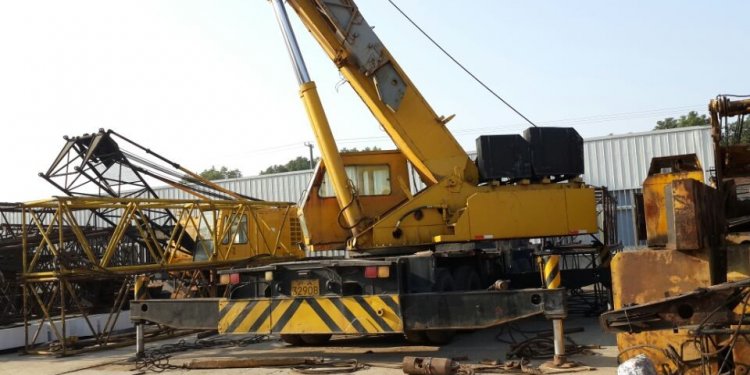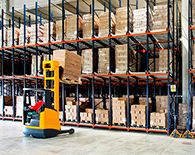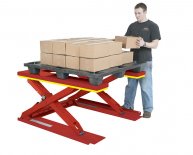
Second Hand lifting equipment
Anyone supplying second-hand equipment for use at work must ensure, so far as reasonably practicable, that it is safe and without risks to health. This applies at all times when the equipment is being set, used, cleaned or maintained by a person at work. Adequate information should also be provided concerning the intended use of the equipment.
Where the second-hand equipment is in scope of one of the European product supply Directives and has not previously been put into service in the European Economic Area (EEA), or placed on the market of the EEA, the person importing it into the EEA must meet the conformity assessment requirements of the relevant European Directives, including CE marking.
The term "sold as seen" or similar cannot be used to avoid these legal responsibilities.
What you must do?
If you supply, whether for payment or not, second-hand equipment for use at work you must take steps to ensure it will be safe and without risks to health at all times when being set, used, cleaned or maintained by a person at work, as far as is reasonably practicable (section 6 of the HSW Act). In addition you must also provide adequate information about using the equipment, normally this will be a copy of the original equipment's instructions in English. This duty applies to importers, distributors and suppliers of equipment for use at work, including one-off sales by users and anyone refurbishing equipment for use at work.
For equipment that was originally CE marked (this applied to most products supplied in the last 15 years) you should ensure, as far as the health and safety aspects are concerned, that it is supplied in the same condition with regard its safety, as when the product was originally placed on the market or first brought into use. This does not mean it has to be in perfect condition, but that all features for health and safety are present and fully functional (eg guards and other safety devices are in good condition and work correctly). You should provide either the original instruction manual or where that is not available a copy. In some cases where periodic inspection, including thorough examination is required, such as complex dangerous plant, lifting equipment and accessories, copies of the last record of inspection / thorough examination should also be provided.
Older equipment, including equipment that did not require CE marking, should be supplied in a safe condition and in some cases this may require additions to what was originally provided. The required standard for safety (ie what is reasonably practicable) can be guided by standards relevant to the product. For example, old non-CE marked machinery (pre 1995) should, where reasonably practicable, meet the requirements of PD 5304:2005 Guidance on the safe use of machinery (available from BSI) which contains the text of the last British Standard on the safety of machinery which would have applied to such pre 1995 machinery.
However, where non CE marked second-hand equipment is in scope of one of the European product supply Directives (eg machinery, pressure equipment), and has not previously been put into service or placed on the market in the EEA, then the person first placing it on the market (or bringing into use) takes on responsibility for the conformity assessment requirements of the relevant Directives and CE marking. This may be the importer or even the user (if imported direct from outside the EEA). They include checking, and if needed, modifying the machine's design / construction to ensure the machine is safe, compiling a technical file, producing a Declaration of Conformity, and CE marking the product with your name as the manufacturer. These requirements apply whether or not the product is intended for professional use at work because the European product supply Directives are concerned with the safety of products when first put into service or first placed on the market of the EEA, including for supply to consumers.
Imports into the EEA of non CE marked machinery manufactured and intended for supply to outside the EEA are also subject to these requirements. This is the case even where they are the same model types as those that are CE marked and produced by manufactures for the EEA market. Such machinery, often referred to as "grey imports", are frequently constructed differently in ways which may not be obvious from casual inspection (eg their control and safety systems may not be designed to meet the essential requirements of European product supply Directives). Importers / purchasers are advised to check carefully before proceeding because in many cases it may be very difficult and expensive for the equipment to be modified to comply with the legal requirements, including PUWER regulation 10.
There are some very limited exceptions to the above obligations of ensuring the safety of the second-hand products:
- Products sold for scrap or spare parts are clearly not intended for use, and so do not need to be made safe or supplied with instructions for use
- Products being sold back to dealers, so not at that stage intended for use at work
- Products being sold from dealer to dealer, so not at that stage intended for use at work
but in each of these cases, to avoid ambiguity, eg in the event of liability claims or regulatory authority enquires, it is recommended that the sale documentation clearly states that this is the basis of sale. Any subsequent sale for use at work will not be covered by these exceptions.
A second-hand product may be sold on the basis that the purchaser provides a written "waiver" to the seller which may have the effect of relieving the seller of liability "to such extent as is reasonable having regard to the terms of the undertaking". In these cases the purchaser agrees in writing to take "specified steps sufficient to ensure, so far as is reasonably practicable, that the article will be safe and without risks to health at all such times" "when it is being set, used, cleaned or maintained by a person at work." This means that the purchaser must clearly understand what health and safety issues need to be dealt with before the product can be used at work. To ensure this it is recommended that the 'waiver' is accompanied by a document listing the specified steps. However, the 'waiver' cannot be used for equipment (being placed on the market for the first time) in scope of the law implementing European product supply Directives. This includes grey imports which must under go conformity assessment and CE marking before supply and use.
Products sold for export from the UK are not covered by UK law. (However, they may be subject to import and safety requirements of the country to which they are supplied and so to avoid liabilities at the product's destination checks should be made in advance with that country's regulatory authorities).

















